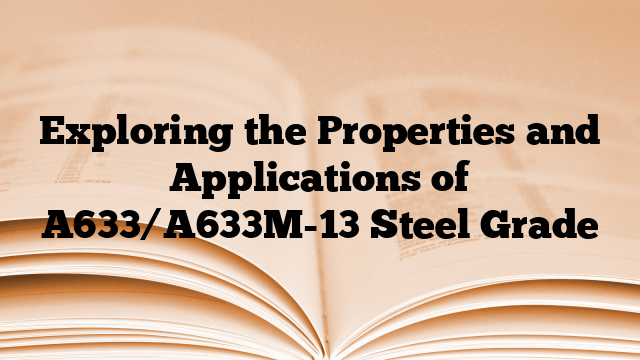The A633/A633M-13 steel grade is a low-alloy, high-strength structural steel that provides good weldability and toughness. It is commonly used in construction and structural applications where the weight of the steel needs to be minimized.
Chemical Composition:
– Carbon (C): 0.18%
– Manganese (Mn): 1.00-1.35%
– Phosphorus (P): 0.030%
– Sulfur (S): 0.030%
– Silicon (Si): 0.15-0.50%
– Nickel (Ni): 0.45%
– Chromium (Cr): 0.25%
– Molybdenum (Mo): 0.08%
– Vanadium (V): 0.015-0.050%
Mechanical Properties:
– Yield Strength: 345 MPa (50 ksi)
– Tensile Strength: 485-620 MPa (70-90 ksi)
– Elongation: 23%
Applications:
– Bridges: A633/A633M-13 steel is commonly used in bridge construction due to its high strength and good weldability.
– Buildings: The steel grade is used in structural applications for buildings where weight reduction is a priority.
– Offshore structures: A633/A633M-13 steel can be found in offshore structures, as it offers good toughness and corrosion resistance.
– Pressure vessels: The steel grade is suitable for manufacturing pressure vessels due to its high strength.
Standard Number:
ASTM A633/A633M-13 is the standard specification for normalized high-strength low-alloy structural steel plates.
Corresponding:
The A633/A633M-13 steel grade corresponds to other international grades, such as S355J2G3 (European norm) and E355FP (French norm). These grades have similar chemical compositions and mechanical properties, making them interchangeable in many applications.

